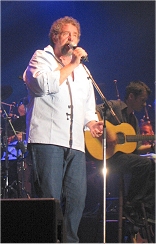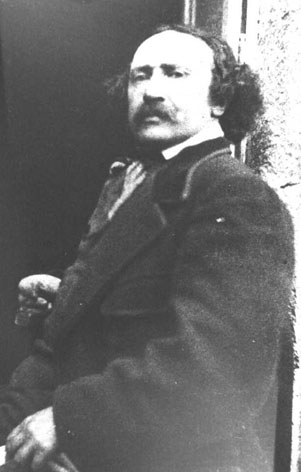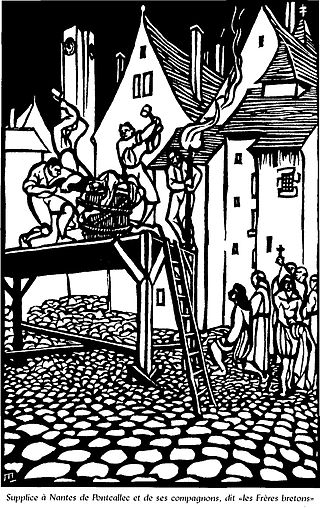Related Research Articles
Since the early 1970s, Brittany has experienced a tremendous revival of its folk music. Along with flourishing traditional forms such as the bombard-biniou pair and fest-noz ensembles incorporating other additional instruments, it has also branched out into numerous subgenres.

Tri Yann is a French band from Nantes who play folk rock music drawing on traditional Breton folk ballads.

Barzaz Breiz is a collection of Breton popular songs collected by Théodore Hersart de la Villemarqué and published in 1839. It was compiled from oral tradition and preserves traditional folk tales, legends and music. Hersart de la Villemarqué grew up in the manor of Plessix in Nizon, near Pont-Aven, and was half Breton himself.

Alan Stivell is a Breton and Celtic musician and singer, songwriter, recording artist, and master of the Celtic harp. From the early 1970s, he revived global interest in the Celtic harp and Celtic music as part of world music. As a bagpiper and bombard player, he modernized traditional Breton music and singing in the Breton language. A precursor of Celtic rock, he is inspired by the union of the Celtic cultures and is a keeper of the Breton culture.

Théodore Claude Henri, vicomte Hersart de la Villemarqué was a Breton philologist and man of letters.

Gilles Servat is a French singer, born in Tarbes in southern France in 1945, into a family whose roots lay in the Nantes region of Brittany. He is an ardent promoter ardent of the Breton culture, and sings in both French and Breton, as well as the other celtic languages, and was a member of Dan ar Braz's Héritage des Celtes. He is also a poet and novelist.

Jef Le Penven was a French composer, born in Pontivy, Morbihan, Brittany.

François-Marie Luzel, often known by his Breton name Fañch an Uhel, was a French folklorist and Breton-language poet.

Yann-Fañch Loeiz Kemener was a traditional singer and ethnomusicologist from Brittany, born in Sainte-Tréphine, Côtes-d'Armor, France. Known in French as Jean-François Louis Quémener.

The Pontcallec conspiracy was a rebellion that arose from an anti-tax movement in Brittany between 1718 and 1720. This was at the beginning of the Régence (Regency), when France was controlled by Philippe II, Duke of Orléans during the childhood of Louis XV. Led by a small faction of the nobility of Brittany, it maintained links with the ill-defined Cellamare conspiracy, to overthrow the Regent in favour of Philip V of Spain, who was the uncle of Louis XV. Poorly organised, it failed, and four of its leaders were beheaded in Nantes. The aims of the conspirators are disputed. In the 19th and early 20th century it was portrayed as a proto-revolutionary uprising or as a Breton independence movement. More recent commentators consider its aims to have been unclear.
Tri Martolod or Tri Martolod Yaouank, is a traditional Breton song which dates to the 18th century in Lower Brittany. It was made famous by the interpretation, the arrangement and the recordings made by the Breton harpist Alan Stivell, in the 1970s.

The Festival de Cornouaille is an annual festival taking place in Quimper, a city in the south-west of Brittany, a western region of France. The festival begins on the third Sunday of July and lasts for one week. It has been held since 1923 and is one of the biggest cultural events in Brittany.
Al Liamm is a bimonthly magazine of culture and literature in the Breton language.
The Order of the Ermine was originally a chivalric order of the 14th and 15th centuries in the Duchy of Brittany. The ermine is the emblem of Brittany. In the 20th century, it was revived by the Cultural Institute of Brittany as an honor for those contributing to Breton culture. It was created in 1972 to honor those who contribute to Breton culture and development. At its head is a Chancellor and two vice-chancellors: Riwanon Kervella and André Lavanant. The siege is at the Institut Culturel de Bretagne, the castle of the Ermine, Vannes.
Morvarc'h is the name of a fabulous horse of Breton legend found in two folktales reworked in the 19th and 20th centuries. Though its name appears in older sources, it was invented or reinterpreted by Charles Guyot, who named it Morvark in his version of the legend of the city of Ys in 1926. It belongs to the "Queen of the North" Malgven, who gives it to her husband King Gradlon. Endowed with the ability to gallop on the waves, Morvarc'h is described as having a black coat and as breathing flames through its nostrils. It also appears in a Breton folktale about King Marc'h of Cornouaille. In the course of a deer hunt it is killed by its own rider's arrow, which has been turned around by the spell of Dahud, the daughter of Malgven. She then puts the ears of the horse Morvarc'h on the head of King Marc'h, who seeks in vain to hide them.
"Gwerz Skolan" is a gwerz with a long tradition in Lower Brittany, especially Léon-Trégor and Cornouaille. Its story is found in Old Welsh texts also, and the oldest extant Welsh version is found in the 13th-century Black Book of Carmarthen. The poem is cited as evidence for the preservation in Brittany of cultural memories and traditions predating the entrance of Bretons into Brittany. The gwerz was performed in Brittany until the 19th century, with some late examples from the 20th century. Its content describes a man who had died after living a life of rape and murder, and now comes back from hell to ask for forgiveness.

Donatien Laurent was a French musicologist and linguist.
La Blanche Hermine is a 1970 song by French singer Gilles Servat with lyrics affirming the Breton identity. It was first published on the eponymous album from 1971, which was certified gold. Calling for an armed uprising against the French, the song quickly became an anthem in Brittany and popular in all of France.

Andrée Le Gouil, known by her stage name Andrea Ar Gouilh, is a French singer.
"Me zo ganet e kreiz ar mor" is an autobiographical poem by the Breton-language writer Yann-Ber Kalloc'h which celebrates the island of Groix, where he was born, and describes his parents' struggles and his own. In a setting by Jef Le Penven it has become one of the most popular Breton-language songs, performed by Alan Stivell, Yann-Fañch Kemener, Julie Fowlis and others. The title has several variants, including Me zo ganet e kreiz er mor and Me zo gañnet é kreiz er mor.
References
- ↑ Théodore Hersart de la Villemarqué, Barzaz Breiz. Franck, 1846, p. 380.
- ↑ Yann Brékilien, La Bretagne d'hier et de demain. J. P. Delarge, 1978. ISBN 2711301087, p. 118
- ↑ André-Georges Hamon, Chantres de toutes les Bretagnes: 20 ans de chanson bretonne. J. Picollec, 1981. ISBN 2864770342, p. 49
- ↑ Françoise Morvan, Le monde comme si: nationalisme et dérive identitaire en Bretagne. Actes Sud, 2002. ISBN 2742739858, p. 173
- ↑ "Twa Corbies / Two Ravens". Mainly Norfolk. Retrieved 25 December 2014.